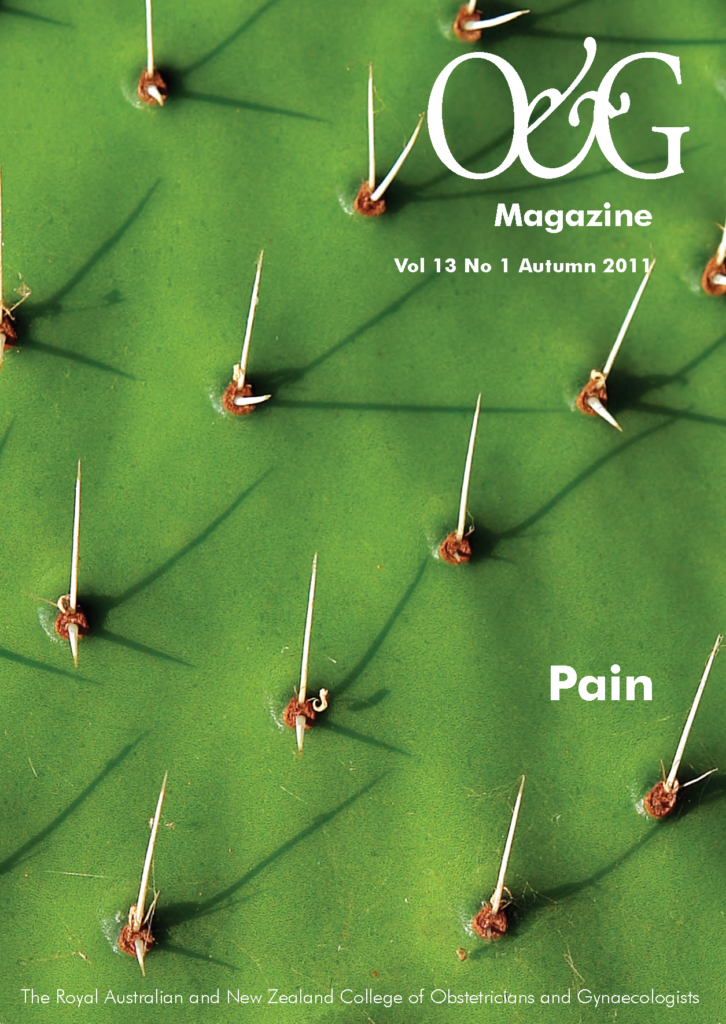Pregnancy-related pelvic girdle pain is a very common problem affecting the sacroiliac joints and/or the symphysis pubis.
Pregnancy-related pelvic girdle pain (PPGP) is related to poor stability of the pelvic girdle joints and women present at all stages of pregnancy. Generally, the pain is not constant and is aggravated by changing position, walking and sustained sitting or standing. The woman may describe a sharp stabbing pain deep in the region of the sacroiliac joint/s and bilateral ache across the low back region, with pain also sometimes felt in one or both legs. Symphysis pubis pain tends to be localised anteriorly over the joint and may refer pain into the groin. The pain ranges from being annoying during everyday activities to having a huge effect on the woman’s lifestyle. For a small group of women, the problem is very serious, affecting all aspects of life and causing long-lasting (sometimes permanent) effects on the pelvic joints. Around 20 per cent of women have PPGP needing treatment1, 2 – fortunately, most women recover within three months of delivery, although between five and seven per cent of women with PPGP have ongoing problems.4
PGP occurs due to a combination of factors – primarily hormonal changes that result in increased joint laxity, the increasing weight of the fetus and placenta, and altered centre of gravity due to distension of the abdomen. The degree of actual movement of the joints is debatable1, but in the sacroiliac joints it is likely the hypermobility results in counternutation (anterior rotation of the ilium relative to the sacrum) – this is very small movement (normal motion is 2° but can be up to 4°)1, but can have a large effect on function.
There is considerable debate in the literature about risk factors, but previous low back pain and/or previous trauma to the pelvis are the most likely risk factors for developing PPGP during pregnancy; other possible factors being high workload and multiparity. Non-risk factors are contraceptive pills, time since last pregnancy, height, weight, smoking and age.1
Diagnosis of PPGP is primarily made by subjective pain history and clinical examination. The recommended tests for sacroiliac joint pain are the posterior pelvic pain provocation (P4) test, Patrick’s test, FABER (flexion abduction external rotation) test, palpation of the long dorsal sacroiliac joint ligament and Gaenslen’s test. The symphysis pubis is assessed by palpation and a modified Trendelenberg test; and the active straight leg raise is a good functional test. Diagnostic imaging is generally not useful as there is little evidence to suggest that joint movement is related to severity of pain.1
For most women, the treatment for PPGP is reasonably straightforward provided they present early. An individualised exercise program to improve core stability and advice on posture and modifications to daily activities are very effective. It is also important to correct the position of the joint if counternutation is suspected – this can be done by a simple exercise or using manual therapy and can greatly ease pain, particularly on first rising out of a chair or bed. Other treatments likely to be useful in the treatment of PPGP are aquatherapy (walking or exercising in water) and acupuncture. The use of a support belt can be a useful adjunct to treatment, but is not the primary focus of treatment.3
The women who are most severely affected by PPGP may experience difficulty walking and performing simple daily activities. For these women a multidisciplinary approach is vital. Women are far more likely to achieve successful outcomes when they feel that they are being overseen by a number of different health professionals – including physiotherapists, obstetricians, midwives, pain team, psychologists and social workers. These women can end up housebound, using crutches to ambulate and being hospitalised for parts of their pregnancy.
Pregnancy-related pelvic girdle pain varies greatly in presentation and severity. Women should be referred to a physiotherapist early in the presentation of symptoms in order to obtain the optimal outcome from treatment. In many cases, only a single treatment session is required with these women and they experience minimal further discomfort during the pregnancy.
References
- Vleeming A, Albert H, Ostgaard H, Sturesson B, Stuge B. European Guidelines on the diagnosis and treatment of pelvic girdle pain. Eur Spine J. 2008 June; 17(6): 794-819.
- Lee, D. Pregnancy and its potential complications. In: Lee D, editor. The pelvic girdle: an integration of clinical expertise and research (4th ed). Edinburgh: Churchill Livingstone Elsevier; 2011. p. 129-146. Depledge J, McNair P, Keal-Smith, Cheryl,
- Williams, Maynard. Management of symphysis pubis dysfunction during pregnancy using exercise and pelvic support belts. Physical Therapy. 2005 December 1; 85(12):1290-1300.
- Ostgaard H, Andersson G. Postpartum low back pain. Spine. 1992; 17(1): 53.






Leave a Reply